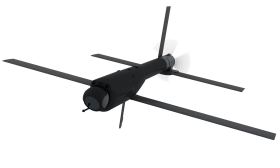Army picks Griffon, Textron to build tactical unmanned VTOL aircraft prototypes

The Army has tapped two companies to move forward in the next phase of its Future Tactical Unmanned Aircraft System (FTUAS) rapid prototyping program, the service announced Monday.
Griffon Aerospace and Textron Systems have each received contracts to design and build prototypes of the tactical unmanned vertical takeoff and landing (VTOL) aircraft for the Army, beating out Northrop Grumman and Sierra Nevada Corps. for phase 2 of the program.
The Army’s program executive office for aviation confirmed to DefenseScoop that the awards are based on the results of a competitive evaluation and could reach $25 million, depending on how far each company progresses through the option agreements.
Phase 2 of the rapid prototyping effort began Tuesday and will have the Army evaluate weapon systems designs from both winning contractors to achieve critical design review, “which will establish the final system design and initial product baseline,” according to an Army press release.
If chosen to move on to the third phase of the program, remaining vendors will conduct flight demonstrations and undergo modular open systems architecture third-party verification, the release said. A final phase will include delivering the system for developmental testing and soldier touch points, it noted.
The FTUAS is part of the Army’s future vertical lift modernization efforts, alongside the Future Attack Reconnaissance Aircraft (FARA) and the Future Long Range Assault Aircraft (FLRAA) programs. The service wants the unmanned VTOL aircraft to eventually replace its Textron-made RQ-7 Shadow drone currently used to conduct reconnaissance, surveillance, target acquisition and battle damage assessment missions.
Unlike the trailer-launched Shadow, the FTUAS drone will be able to rapidly and vertically take off and land in different environments without the need for a runway. The new system will also offer more maneuverability, the ability to be controlled by operators while on the move, a smaller logistical footprint and a lower noise signature, according to the service.
“FTUAS will provide a critical capability to the Brigade Combat Team’s ability to conduct reconnaissance and surveillance operations that collect, develop, and report actionable intelligence information about the enemy in Multi-Domain Operations,” an Army press release stated.
The Army began modernization efforts of the Shadow unmanned aircraft in 2018, eventually awarding AeroVironment an $8 million contract in 2022 to provide its Jump 20 system as a provisional replacement known as “increment 1.”
Shortly after, the service began “increment 2” and in February selected Griffon Aerospace, Textron Systems, Northrop Grumman, Sierra Nevada Corps. and AeroVironment to compete in prototyping efforts for FTUAS. Although it previously won the contract for the first increment, AeroVironment announced in May that the Army had eliminated the company from the program.
During the first phase of increment 2, vendors built prototypes that were evaluated on performance, cost, schedule, risk and modular open systems approach requirements — ultimately ending with preliminary design reviews, according to an Army press release.
According to budget documents, the Army requested a total of $28.2 million in fiscal 2024 for research and development of the FTUAS program — which includes newly added funds for test and evaluation worth $14.6 million — as well as $46.2 million to procure four systems.
The competitive prototyping phase is scheduled to wrap up by the end of 2024, with test and evaluation ending shortly after during the first quarter of fiscal 2025, according to the Army’s latest budget request.






